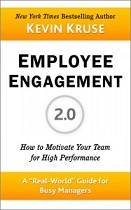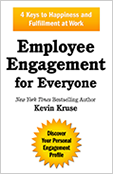Stuart asks: I am feeling increasingly unhappy at my job. My stress level is so high that it is affecting me physically and mentally. How do I manage my stress without burning out?
Anne Loehr, Executive Leadership Coach responds:
“Bad stress” is an ever increasing problem at work and it is essential to find ways to reduce it. “Bad stress” causes us to worry, experience fear and feel anxious. Any form of stress that makes us perform below our potential is considered bad stress. Bad stress increases the cortisol levels in our blood, which can lead to many problems such as high blood pressure, early onset diabetes, heart problems and central obesity (bulging belly).
There are many ways to reduce bad stress at work. I’m going to discuss one way now, so I don’t stress you out with too much info! 🙂
More and more people are using email, text and instant messaging as their chief communication tools for daily work life. It’s instant, it’s easy, AND it creates lots of stress! Researchers have identified three major problems:
- This form of communication lacks cues like facial expression and tone of voice. That makes it difficult for recipients to decode the meaning. It is the poorest form of communication because it only uses words.
- The prospect of instantaneous communication creates an urgency that pressures online communicators to think and write quickly, which can lead to carelessness.
- Finally, the inability to develop personal rapport over online communications makes relationships fragile in the face of conflict. Online communication is great for confirming meetings, getting an address or sharing a short piece of data. Unfortunately it is used for a lot of other communications which should be done in person.
Here are some tips:
Never argue by email. Save discussions, especially on controversial topics, for when more direct forms of communication are possible. Pick up the phone and/or set a time to discuss issues.
Keep it short. We’re talking less than 50 words. We have about 15 seconds of attention span to offer any incoming email. If you can’t get the message across in that time, either attach a separate document with all the details, or pick up the phone for the discussion. Or use the email to set the time for the discussion.
If you want to lower your stress levels, limit your email communications and switch to phone and face to face conversations for better results. It is more meaningful, more effective, and can generate new relationships in an already tense world.
MORE

